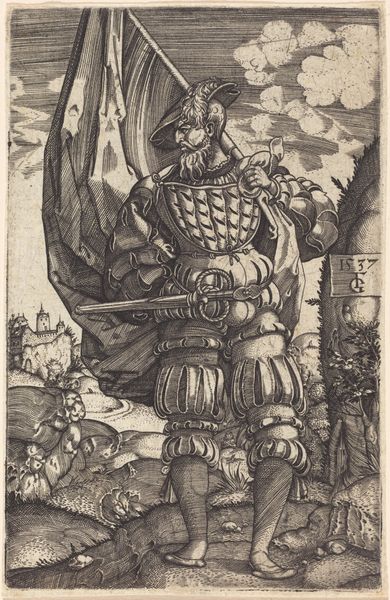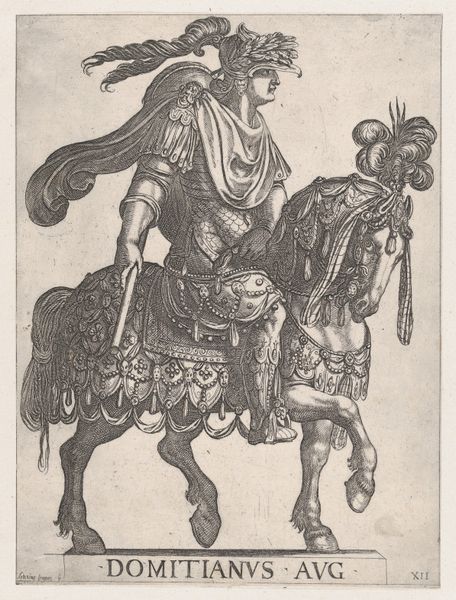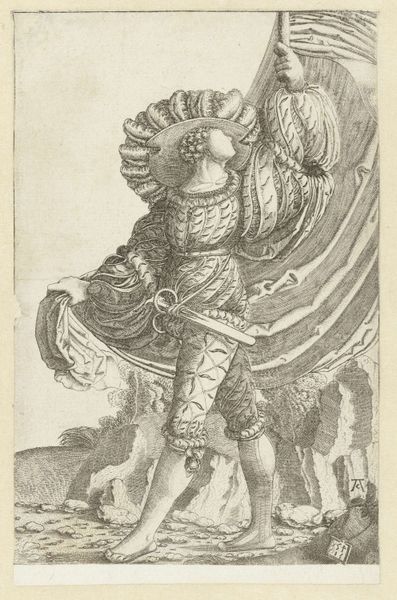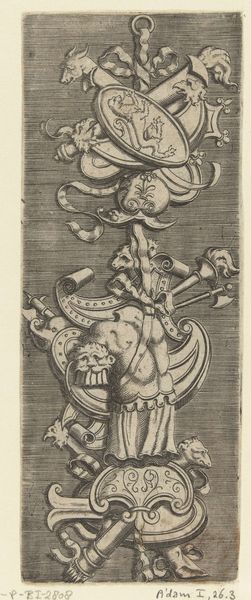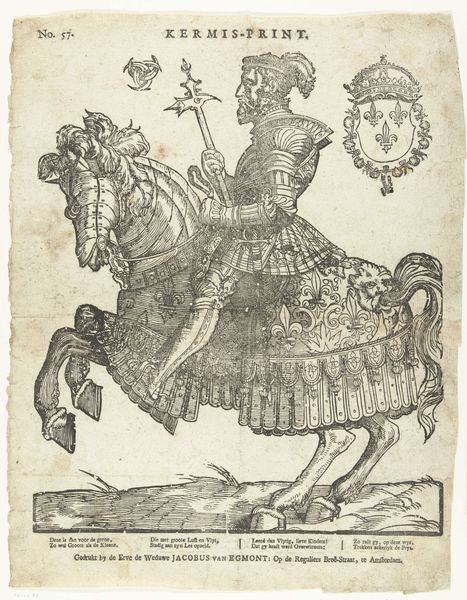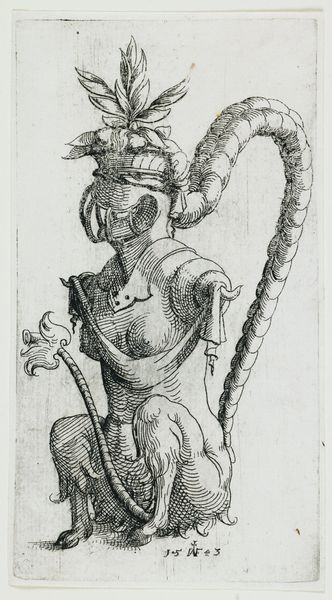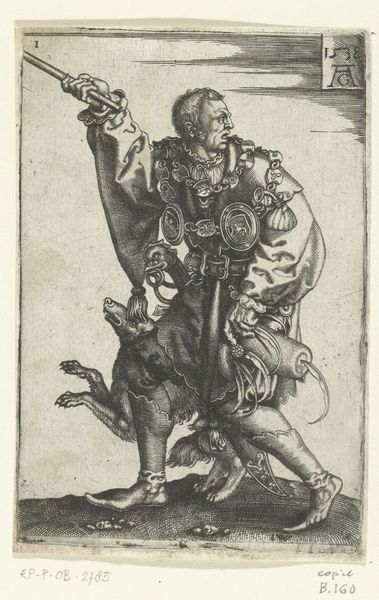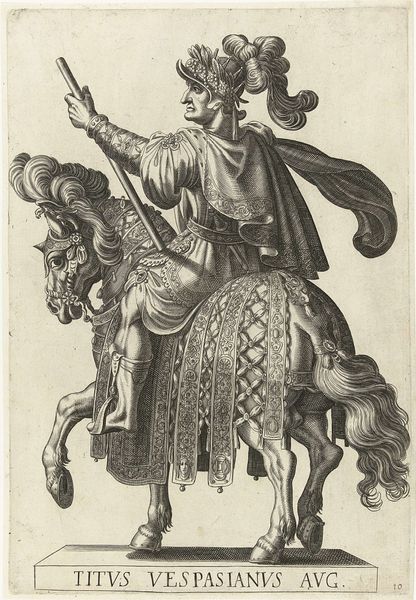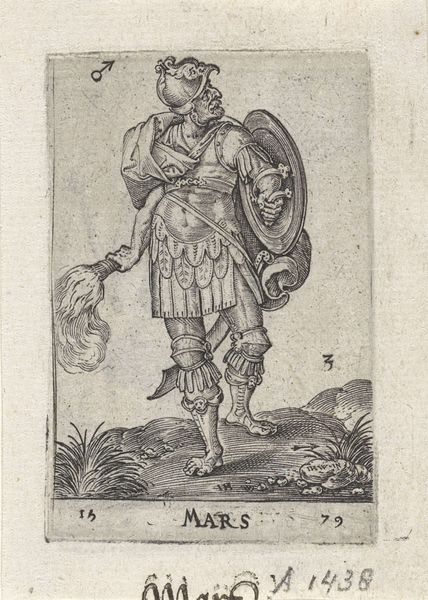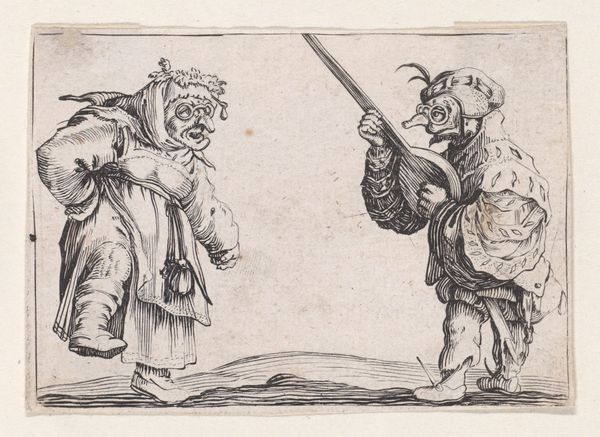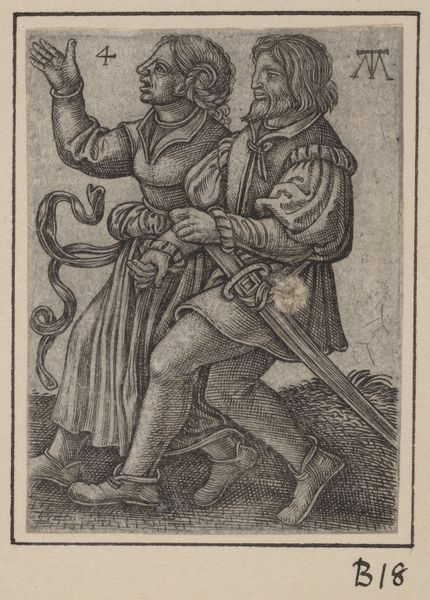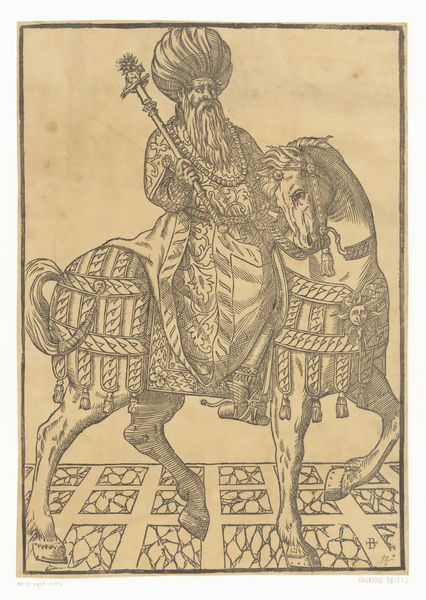
Wilhelmus de 3de prince d'Orange dien dappere held / Die als een fiere leeuw zyn vyand nederveld 1725 - 1780
0:00
0:00
print, engraving
#
dutch-golden-age
# print
#
pen sketch
#
pencil sketch
#
old engraving style
#
figuration
#
history-painting
#
engraving
Dimensions: height 416 mm, width 308 mm
Copyright: Rijks Museum: Open Domain
Curator: Up next, we have an engraving by Johannes Kannewet titled "Wilhelmus de 3de prince d'Orange dien dappere held / Die als een fiere leeuw zyn vyand nederveld," dating from somewhere between 1725 and 1780. Editor: Well, the immediate impact is... forceful! It’s quite detailed for an engraving, almost overwhelming. All those tiny lines and shapes create a sense of power and ornate, old world importance. Curator: It depicts William III, Prince of Orange, as a triumphant hero, standing over a defeated enemy. The lion, of course, symbolizes courage, and reinforces the Dutch identity and the print itself conveys the intense political climate of the time. Editor: Yes, definitely. You can see the visual tropes being employed to bolster a certain idea of leadership, particularly around military strength, the iconography of lions, the shield and the armour, is designed to portray this prince as invincible and his enemies as… sub-human, almost demonic in their defeat. This work really underscores how identity, power, and violence are interwoven, particularly when discussing the legacies of rulers. Curator: The interesting thing is that, technically, Kannewet was a bookseller first, not necessarily a trained artist. Which might explain some of the almost obsessive detailing and, to me, slightly awkward rendering. But the intention is clearly propaganda. The Dutch Lion by his side. His face, looking noble and unflinching. And those intricate depictions are key. Editor: It is, despite its small size, an example of how prints like this became crucial tools in shaping public opinion and spreading political messages, making this an incredibly useful artefact for those of us that want to decode the cultural landscape. The way leaders have, and continue to be perceived really. Curator: Absolutely. And in terms of craft, you have to admire the dedication required to create that level of detail in engraving – it’s like the opposite of today’s throwaway culture, almost reverential, don’t you think? It invites reflection not just on William's legacy but also on the power of the image and political symbol. Editor: Precisely. These prints remind us that how we see—and remember—historical figures is never neutral, but rather the product of careful, often strategic, constructions. They can allow a kind of visual interrogation to understand both the subject, in this case William of Orange and his representation. Curator: Thanks, that’s definitely food for thought. Editor: My pleasure, food for the eyes too!
Comments
No comments
Be the first to comment and join the conversation on the ultimate creative platform.
